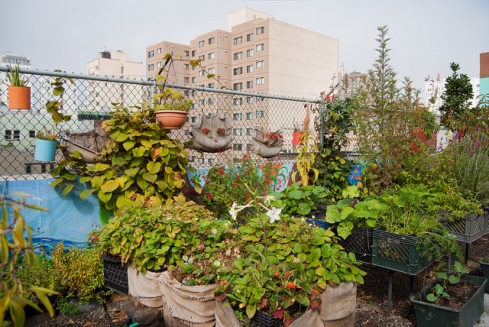Along with the trends of buying local food, buying organic, etc., there seems to be an increase in (or perhaps more accurately, a return to) gardening – especially in urban areas. Urban gardening is a great way to save money on food, a great source for fresh vegetables, and an easy way to introduce kids to where the food on their plate comes from. In fact, working with the soil has been proven to make you happier! However, there are a couple potential obstacles you should consider first before starting your urban garden.

First, in urban environments the possibility that soil could have been contaminated with heavy metals, petrochemicals, etc. is pretty high. Lead (which was once a common additive to gasoline and paint) is common in urban soils and can be adsorbed by the roots of the vegetables you grow. Because of this, that lead can eventually end up in the food on your plate. Most lead poisoning comes from ingesting lead (like eating lead paint chips…), so it’s important to know that the soil you’re using for your garden is safe. You should take some soil samples and send them to a lab in your state that can test for heavy metals like lead. Usually the “land grant” university in your state (in the US) will have a soil testing lab where these tests can be performed for a nominal cost. Other forms of contamination are possible as well, such as chemicals from cars, asphalt , laundry-mats, etc. These chemicals are more difficult to test for, so your best bet is to find out the history of your garden plot. These records should be available from your local city government, perhaps even online.
Second, urban soils are often compacted from foot, car, or perhaps machinery traffic. Compacted soils make it difficult for plants to grow, mainly because the plant roots are not strong enough to penetrate the compacted soil, and thus cannot gather enough water or nutrients for the plant to survive, let alone grow and produce vegetables. Compacted soils are especially common in newer housing developments where entire blocks of houses were built around the same time. The construction companies often remove all of the topsoil prior to building the houses. The soils are then driven over by construction machinery and compacted. Then sod is laid directly on top of the subsoil. This makes for soils with very poor growing conditions for both lawns and gardens.
Read more: http://colbydigssoil.com/2014/08/16/urban-gardening-thoughts-from-a-soil-scientist/























